It's possible I think.
Firstly, when we need the web app to have the ability to call graph api on behalf of a user(using https://graph.microsoft.com/beta/me), we need to integrate microsoft authentication module so that uses can sign in first then app can know who is me.
Then in asp.net core application, microsoft provide graph sdk for helping calling ms graph api.
Now we need to integrate ms sign in module and graph sdk into your asp.net core app, you can refer to this sample or my code(based on asp.net core MVC 5) below.
Adding login in partial view page named _LoginPartial.cshtml and add it into _layout.cshtml:
@using System.Security.Principal
<ul class="navbar-nav">
@if (User.Identity.IsAuthenticated)
{
<li class="nav-item">
<span class="navbar-text text-dark">Hello @User.Identity.Name!</span>
</li>
<li class="nav-item">
<a class="nav-link text-dark" asp-area="MicrosoftIdentity" asp-controller="Account" asp-action="SignOut">Sign out</a>
</li>
}
else
{
<li class="nav-item">
<a class="nav-link text-dark" asp-area="MicrosoftIdentity" asp-controller="Account" asp-action="SignIn">Sign in</a>
</li>
}
</ul>

Then add configurations in appsettings.json:
"AzureAd": {
"Instance": "https://login.microsoftonline.com/",
"Domain": "your_tenant_name.onmicrosoft.com",
"TenantId": "tenant_id",
"ClientId": "azure_ad_app_client_id",
"ClientSecret": "client_secret",
"CallbackPath": "/signin-oidc",//you need to add redirect url in azure portal->azure ad->your app->authentication->web platform->add redirect url like https://localhost:44321/signin-oidc
"SignedOutCallbackPath ": "/signout-callback-oidc"
}
Then modify Startup.cs, don't forget adding app.UseAuthentication();
using Microsoft.Identity.Web;
using Microsoft.Identity.Web.UI;
using Microsoft.AspNetCore.Mvc.Authorization;
using Microsoft.AspNetCore.Authorization;
public void ConfigureServices(IServiceCollection services)
{
services.AddMicrosoftIdentityWebAppAuthentication(Configuration)
.EnableTokenAcquisitionToCallDownstreamApi(new string[] { "user.read" })
.AddMicrosoftGraph(options =>
{
options.Scopes = string.Join(' ', new string[] { "user.read" });
})
.AddInMemoryTokenCaches();
// Require authentication
services.AddControllersWithViews(options =>
{
var policy = new AuthorizationPolicyBuilder()
.RequireAuthenticatedUser()
.Build();
options.Filters.Add(new AuthorizeFilter(policy));
})
// Add the Microsoft Identity UI pages for signin/out
.AddMicrosoftIdentityUI();
}
Then in the controller, update it like this, you can call graph api with /me endpoint.
using Microsoft.AspNetCore.Authorization;
using Microsoft.Graph;
using Azure.Identity;
[Authorize]
public class HomeController : Controller
{
private readonly GraphServiceClient _graphClient;
public HomeController(GraphServiceClient graphClient)
{
_graphClient = graphClient;
}
public async Task<IActionResult> IndexAsync()
{
var me = await _graphClient.Me.Request().GetAsync();
ViewBag.Myname = me.DisplayName;
return View();
}
}
Then when you want the app to call graph api on behalf of the application itself, we need to use client credential flow. So here's my sample, just modify the controller method:
public async Task<IActionResult> IndexAsync()
{
var me = await _graphClient.Me.Request().GetAsync();
ViewBag.Myname = me.DisplayName;
var scopes = new[] { "https://graph.microsoft.com/.default" };
var tenantId = "your_tenant_name.onmicrosoft.com";
var clientId = "azure_ad_client_id";
var clientSecret = "client_secret";
var clientSecretCredential = new ClientSecretCredential(
tenantId, clientId, clientSecret);
var graphClient = new GraphServiceClient(clientSecretCredential, scopes);
var user = await graphClient.Users["tinytest@your_tenant_name.onmicrosoft.com"].Request().GetAsync();
ViewBag.Username = user.DisplayName;
return View();
}
The nuget packages I installed:
<PackageReference Include="Microsoft.Graph" Version="4.19.0" />
<PackageReference Include="Microsoft.Identity.Web" Version="1.24.1" />
<PackageReference Include="Microsoft.Identity.Web.MicrosoftGraph" Version="1.24.1" />
<PackageReference Include="Microsoft.Identity.Web.UI" Version="1.24.1" />
Test result:




